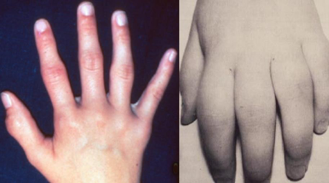ATI Paediatrics Exam
Total Questions : 46
Showing 25 questions, Sign in for moreA neonate is displaying mottled skin, has a large fontanel and tongue, is lethargic, and is having difficulty feeding. The nurse recognizes that this is most suggestive of which disorder?
Explanation
Hypothyroidismreferstoanunderactivethyroid glandthatdoesnotproduceenoughthyroidhormones. In newborns, this condition is known as congenital hypothyroidism. Thesymptoms mentioned—mottled skin, a large fontanel (soft spot on the baby's head), a largetongue,lethargy, anddifficultyfeeding—arecharacteristic ofhypothyroidism inneonates.
Mottledskincanoccur duetodecreasedcirculationandlow bodytemperatureassociatedwith hypothyroidism. A large fontanel and tongue are common physical features seen ininfants with hypothyroidism. Lethargy and poor feeding are also typical signs of thiscondition.
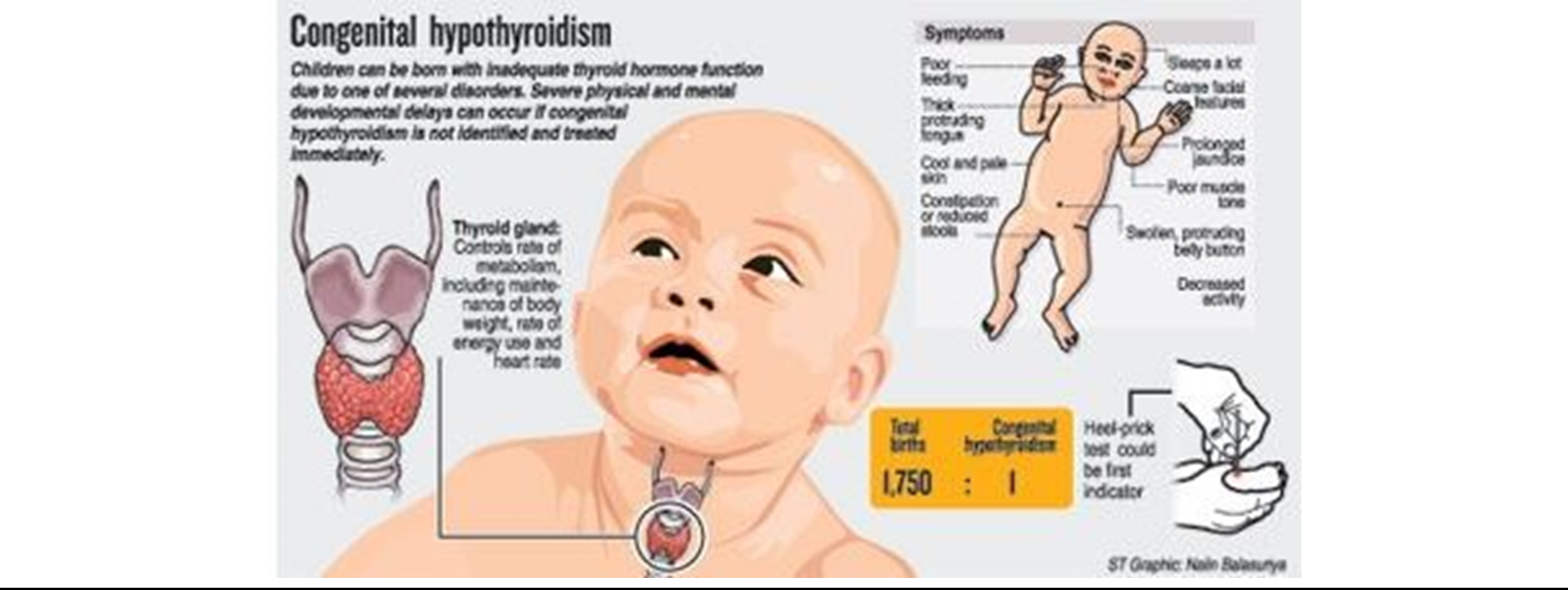
Hypoglycaemia in (option A) is incorrect because it refers to low blood sugar levels andusuallypresentswithdifferent symptomssuchas jitteriness,tremors,and sweating.
Hypocalcaemia in (option C) is incorrect because it is low calcium levels and can manifestwithsymptoms like muscle cramps, twitching,and seizures.
Phenylketonuria (PKU) in (option D) it is incorrect because it is a metabolic disordercharacterized by the inability to metabolize the amino acid phenylalanine, and it typicallypresentswith differentsymptoms such asintellectual disabilityandamustydoorto theskin.
Therefore, based on the symptoms described, hypothyroidism (B) is the most likely disorderinthisneonate. Itisimportanttoconsultahealthcareprofessionalforaproperdiagnosisandappropriatetreatment.
A mother reports that her child has episodes where he appears to be staring into space. This behaviour is characteristic of which type of seizure?
Explanation
Thebehaviourdescribed,wherethechildappearstobestaringinto space,is characteristicof
B.Absenceseizures.
Absence seizures, also known as petit mal seizures, are a type of generalized seizure thatprimarily affects children. These seizures are brief and usually last for a few seconds. Duringan absence seizure, the child may appear to be staring blankly into space, unaware of theirsurroundings.Theymaynot respond to stimuli orengagein anypurposefulactivity.After theseizure ends, the child typically resumes their previous activity without any memory of theseizure.
Atonic seizures in (option A) is incorrect because it involves a sudden loss of muscle tone,leadingtoalimp or "drop"in theperson.
Simple partial seizures in (option C) are focal seizures that affect a specific region of thebrain,causinglocalizedsymptoms suchas twitchingor tinglinginaparticularbodypart.
Tonic-clonic seizures in (option D) also known as grand mal seizures, is incorrect because itinvolves a combination of muscle rigidity (tonic phase) and jerking movements (clonicphase).
Therefore, based on the description provided, the behaviour of staring into space ischaracteristic of B. Absence seizures. It is important for the child to be evaluated by ahealthcare professional for an accurate diagnosis and appropriate management of theirseizures.
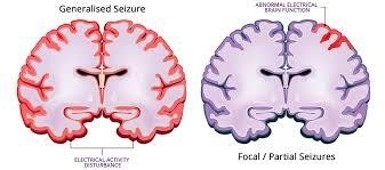
When a 2-week-old infant is seen for irritability, poor appetite, and rapid head growth with observable distended scalp veins, the nurse recognizes these signs as indicative of which disorder?
Explanation
Hydrocephalus refers to a condition characterized by an abnormal accumulation ofcerebrospinal fluid (CSF) within the ventricles of the brain. In infants, hydrocephalus cancause the head to enlarge rapidly as a result of the increased pressure exerted by theaccumulatingfluid.Thisisknownas"rapidheadgrowth."Theincreasedintracranialpressurecanlead to irritabilityand poorappetite in infants.
The distended scalp veins are another common sign of hydrocephalus. As the fluidaccumulates,itputs pressureon thebloodvessels inthe brain,causingtheveinsin thescalptobecome morevisible and distended.
Cerebral palsy in (option A) is incorrect because is a neurological disorder that affects bodymovementandmusclecoordination,butitdoesnottypicallypresentwithrapid headgrowthordistended scalp veins.
Syndrome of inappropriate antidiuretic hormone (SIADH) in (option B) is incorrect becauseitisacondition characterized byexcessivesecretionofantidiuretichormone,leadingtofluidimbalance, but it does not usually cause rapid head growth or distended scalp veins. Reye'ssyndrome (D) is a rare condition that primarily affects the liver and brain, and it does nottypicallypresent with rapid headgrowthor distended scalp veins.
Therefore, based on the signs described, hydrocephalus (C) is the most likely disorder in thiscase.Itisimportantto seekmedicalattentionpromptlyforaproperdiagnosisand appropriatemanagementofhydrocephalus in infants.
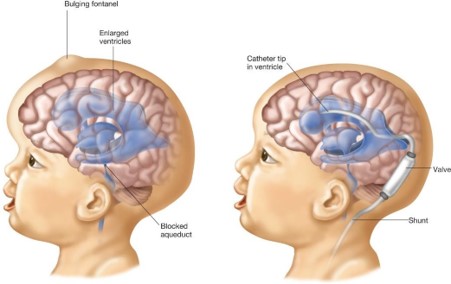
Which is assessed with Tanner staging?
Explanation
Tanner staging is a method used to assess and describe the development of secondary sexcharacteristics during puberty. It is primarily focused on the physical changes that occur asindividuals transition from childhood to adulthood. The Tanner scale consists of differentstages(ItoV)that describethedevelopmentofspecificsecondarysexcharacteristicssuchasbreastdevelopment, pubichairgrowth,genital development,and facialhair growth.
Growthhormonesecretionin(optionA)isincorrectbecauseWhilegrowthhormonedoesplay a role in the overall growth and development of individuals during puberty, Tannerstagingdoes not specificallymeasureor assessgrowth hormone secretion.
Hormone levels in (option B) is incorrect because While hormone levels, including sexhormonessuchas estrogenandtestosterone, doplayasignificantrolein thedevelopmentofsecondary sex characteristics, Tanner staging itself does not involve measuring or assessinghormone levels. Hormone levels can be assessed through laboratory testing, but this is aseparateprocess from Tanner staging
Hyperthyroidism in (option C) is incorrect because Hyperthyroidism, on the other hand, is amedical condition characterized by an overactive thyroid gland that produces an excessivenumberofthyroidhormones.Itisnotdirectlyrelatedtothedevelopmentofsecondarysexcharacteristics. Diagnosing hyperthyroidism typically involves assessing symptoms,conductingphysicalexaminations,andperformingspecificbloodteststomeasurethyroidhormone levelsandevaluatethyroidfunction.
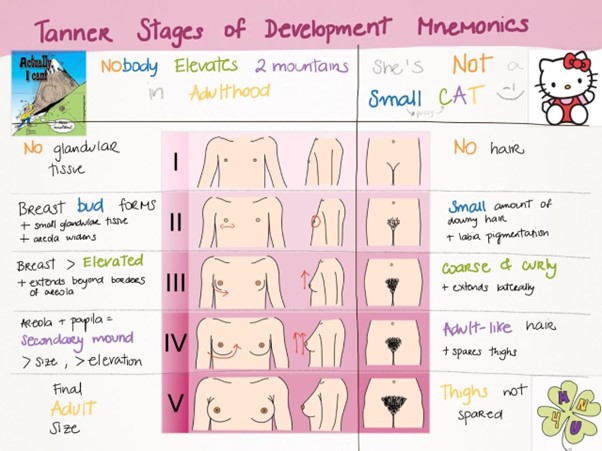
Which factor predisposes the urinary tract to infection?
Explanation
The anatomy of the urinary tract can influence the susceptibility to urinary tract infections (UTIs). In the case of young girls, their urethra is shorter compared to adult females, which increases the likelihood of bacteria reaching the bladder. The shorter urethra provides a shorter distance for bacteria to travel from the outside of the body to the bladder, making it easier for bacteria to enter and cause an infection.
Prostatic secretions in males in (option A) is incorrect because they are not directly related to the increased susceptibility to UTIs. Prostatic secretions can, however, contribute to conditions like prostatitis, which is an inflammation of the prostate gland that can be associated with urinary symptoms and sometimes bacterial infections.
Frequent emptying of the bladder in (option C) is incorrect because it is generally considered a healthy practice as it helps to flush out any potential bacteria in the urinary tract. It does not predispose the urinary tract to infection.
Increased fluid intake in (option D) is incorrect because it is generally encouraged to maintain proper hydration and urinary tract health. It can help to flush out bacteria from the urinary system, reducing the risk of infection.
While these factors may have implications for urinary tract health, the specific factor that predisposes the urinary tract to infection, particularly in young girls, is the short urethra (B).
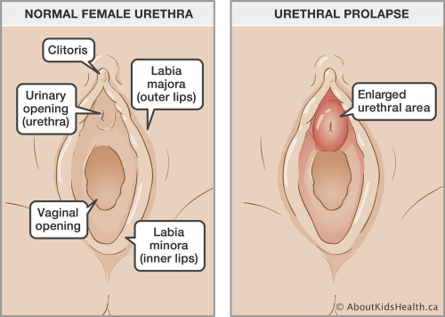
A nurse is teaching parents about diarrhea. Which statement by the parents indicates understanding of the teaching?
Explanation
Diarrhea is characterized by increased motility of the intestines, which leads to a decreased absorption of fluid and nutrients. This statement correctly indicates an understanding of the teaching regarding diarrhea.
Organisms destroy intestinal mucosal cells, resulting in an increased intestinal surface area in (Option A) is incorrect because organisms causing diarrhea can lead to damage or inflammation of the intestinal mucosal cells, but they do not destroy them to increase the intestinal surface area.
Malabsorption results in metabolic alkalosis in (Option B) is incorrect because malabsorption does not result in metabolic alkalosis. Malabsorption refers to the impaired absorption of nutrients, but it does not directly affect the acid-base balance in the body.
Diarrhea results from a fluid deficit in the small intestine in (Option D) is incorrect because diarrhea does not result from a fluid deficit in the small intestine. Diarrhea is characterized by an increased volume of fluid in the intestines and increased frequency of bowel movements.
Which statement is accurate concerning a child's musculoskeletal system and how it may be different from an adult's?
Explanation
Infants and children have open growth plates, also known as epiphyseal plates, at the ends of
their long bones. These plates are responsible for bone growth and are not fully fused until
the child reach skeletal maturity. Due to the presence of open growth plates, infants and
children are more prone to fractures because their bones are still developing and are less
dense than those of adults.
Their bones have less blood flow in (Option A) is incorrect because cchildren’s bones
actually have a greater blood flow compared to adults. This increased blood flow supports the
rapid growth and development of bones in children.
Growth occurs in children as a result of an increase in the number of muscle fibers in (option
B) is incorrect because ggrowth in children occurs primarily due to the elongation and
thickening of existing muscle fibres, not an increase in their number. This option inaccurately
suggests that children's muscles increase in fibber count to facilitate growth.
Because soft tissues are resilient in children, dislocations and spirals are less common than in
adults in (Option D is) incorrect. While soft tissues may be more resilient in children, it does
not mean that dislocations and sprains are less common than in adults. In fact, children's
ligaments and joint structures are still developing and may be more susceptible to injuries
such as sprains and dislocations compared to adults.
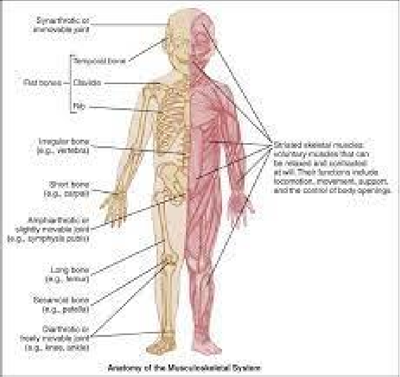
A child is hospitalized after a serious motor vehicle crash and has developed increased urination. What action by the nurse takes priority?
Explanation
In this scenario, the child's increased urination after a serious motor vehicle crash may
indicate a potential issue with fluid balance. Monitoring the child's intake and output is the
priority action for the nurse. This involves accurately measuring and recording the fluids the
child consumes (intake) and the fluids the child eliminates through urine, sweat, and other
sources (output). By closely monitoring the child's intake and output, the nurse can assess the
child's fluid status and identify any abnormalities or imbalances that may require further
intervention.
Restrict dietary sodium intake in (option A) is incorrect because restricting dietary sodium
intake, may be necessary in certain situations, such as if the child has a known sodium
imbalance or hypertension. However, it is not the priority action in this scenario.
Assess the daily serum sodium level in (option B) is incorrect because assessing the daily
serum sodium level, is important to evaluate the child's electrolyte balance. However, it is not
the priority action compared to monitoring the child's intake and output.
Weigh the child daily in (option C) is incorrect because weighing the child daily, is a useful
measure to assess changes in fluid balance. However, it is not the priority action in this
scenario compared to monitoring the child's intake and output, which provides real-time
information on fluid balance.
Which behaviour suggests appropriate psychosocial development in the adolescent?
Explanation
During this stage, adolescents typically experience a shift from a primary focus on family to
an increased emphasis on peer relationships. However, it is still important for adolescents to
maintain a connection with their family and enjoy spending time with family members. This
behaviour indicates a healthy balance between peer interactions and maintaining positive
relationships with family.
The adolescent is self -absorbed and self-centred and has sudden mood swings in (option A)
is incorrect because it describes behaviours associated with emotional and psychological
challenges commonly seen in adolescence but does not indicate appropriate psychosocial
development.
The adolescent seeks validation for socially acceptable behaviour from older adults in (option
C) is incorrect because seeking validation for socially acceptable behaviour from older adults,
may indicate a lack of autonomy and difficulty in developing a sense of personal identity,
which is important for healthy psychosocial development in adolescence.
Conformity with the peer group increases in late adolescence in (Option D) is incorrect
because stating that conformity with the peer group increases in late adolescence, is not
entirely accurate. While peer influence is significant during adolescence, there is also a
growing emphasis on individuality and the development of one's own identity. Adolescents
may experience a balance between conforming to certain aspects of their peer group and
asserting their unique traits and interests.
A 6-year-old patient who has been placed in skeletal traction has pain, edema, and fever.
The nurse should assess which of the following?
Explanation
In the given scenario, the 6-year-old patient in skeletal traction is experiencing
pain, edema, and fever. These symptoms raise concerns about the possibility of an infection
at the site of traction. In such cases, the nurse should assess for warmth at the site of pain.
Increased warmth can indicate inflammation, which may be associated with infection. This
assessment finding would require further investigation and intervention, such as notifying the
healthcare provider and obtaining appropriate cultures or imaging studies.
Neurologic status in (Option A) is incorrect because assessing neurologic status, is important
but not the priority in this scenario. Neurologic status assessment is typically performed to
evaluate any neurovascular compromise resulting from the traction, but the presence of pain,
edema, and fever suggests a potential infection that requires immediate attention.
Range of motion of all extremities in (Option B) is incorrect because assessing the range of
motion of all extremities, is not directly relevant to the given symptoms and should not take
priority over assessing for warmth at the site of pain.
Blood pressure in (Option D) is incorrect because assessing blood pressure, is not directly
related to the symptoms of pain, edema, and fever in the context of skeletal traction. While
blood pressure is an essential vital sign, it does not provide specific information about the
potential infection at the site of pain in this situation.
What is the most important factor in determining the rate of fluid replacement in the dehydrated child?
Explanation
The most important factor in determining the rate of fluid replacement in a dehydrated child
is urine output. Urine output is a crucial indicator of renal perfusion and hydration status.
Monitoring urine output allows healthcare professionals to assess the child's response to fluid
replacement therapy and adjust the rate accordingly.
The type of dehydration in (Option A) is incorrect. The type of dehydration, is important in
determining the appropriate fluid composition for rehydration but does not directly dictate the
rate of fluid replacement.
The child’s weight in (Option B) is incorrect. The child's weight, is considered when
calculating the maintenance fluid requirements, but it does not solely determine the rate of
fluid replacement for dehydration.
Serum potassium level in (Option D) is incorrect. The serum potassium level, is important to
monitor in a dehydrated child, especially in cases of severe dehydration, as electrolyte
imbalances may occur. However, it is not the most important factor in determining the rate of
fluid replacement. Fluid replacement is primarily guided by assessing the child's hydration
status through parameters such as urine output and clinical assessment.
Which is the nurse's best response to the parents of a 10-year-old child newly diagnosed with type 1 diabetes mellitus who are concerned about the child's continued participation in soccer?
Explanation
The nurse's best response to the parents of a 10-year-old child newly diagnosed with type 1
diabetes mellitus, who are concerned about the child's continued participation in soccer, is to
reassure them that it is generally safe for the child to play sports such as soccer unless the
weather is too hot.
Regular physical activity, including participation in sports, is generally encouraged for
children with type 1 diabetes as long as certain precautions are taken. It is important for the
child to have a well-managed diabetes management plan in place, which may include
monitoring blood sugar levels before, during, and after physical activity, adjusting insulin
doses as necessary, and having appropriate snacks available to maintain blood sugar levels.
Option B, suggesting the swim team as an alternative to soccer, may be a viable option if the
child or parents prefer swimming or if the child has specific concerns related to soccer.
However, it is not the best response to the parents' concern about the child's continued
participation in soccer.
Option C, recommending an extra carbohydrate snack before soccer practice, is a valid
suggestion to help maintain the child's blood sugar levels during physical activity. However,
it should be part of a comprehensive diabetes management plan and not the sole response to
the parents' concern.
Option D, encouraging intellectual activity rather than participation in sports, is not
appropriate as physical activity is generally beneficial for children with type 1 diabetes, as
long as appropriate precautions are taken.
What is the best response for the nurse to give a parent about contacting the physician regarding an infant with diarrhea?
Explanation
The best response for the nurse to give a parent regarding contacting the physician about an
infant with diarrhea is option B. In infants, dehydration can occur quickly, and a decrease in
urine output is an important indicator of fluid imbalance. Not having a wet diaper for 6 hours
can be a sign of inadequate fluid intake or excessive fluid loss, which warrants contacting the
paediatrician for further assessment and guidance.
"Call the doctor immediately if the infant has a temperature greater than 100° F,"in (option
A) is incorrect because it is not directly related to the concern of diarrhea. While a high fever
can be a sign of an underlying infection, it is not the primary concern in this case.
"The paediatrician should be contacted if the infant has two loose stools in an 8-hour
period,” in (option B) is incorrect because it may not necessarily require immediate medical
attention. While increased frequency of stools can be concerning, the absence of urine output
is a more critical indicator of dehydration.
"Notify the paediatrician if the infant naps more than 2 hours," in (option D) is incorrect
because it is unrelated to the concern of diarrhea and dehydration.
Which statement best describes a subdural hematoma?
Explanation
A subdural hematoma is a type of intracranial bleeding that occurs between the dura mater (the
outermost layer of the meninges) and the skull. The dura mater is a tough membrane that covers
and protects the brain. When a subdural hematoma occurs, blood collects between the dura mater
and the skull, resulting in increased pressure on the brain.
Bleeding is generally arterial, and brain compression occurs rapidly in (Option B) is incorrect because
while bleeding in a subdural hematoma can be arterial, it can also be venous. The rate of bleeding
and brain compression can vary depending on the size and severity of the hematoma.
Bleeding occurs between the dura and the cerebrum in (Option C) is incorrect because the bleeding
in a subdural hematoma does not occur between the dura and the cerebrum (the largest part of the
brain). It specifically occurs between the dura and the skull.
The hematoma commonly occurs in the pretemporal region in (Option D) is incorrect because the
location of a subdural hematoma can vary. While pretemporal region is a possible location, subdural
hematomas can occur in different areas of the brain, depending on the site of injury.
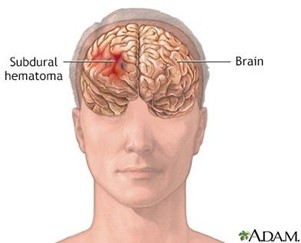
Which factor should the nurse include when teaching a parent about the care of a newborn in a Pavlik harness for hip dysplasia?
Explanation
A. The harness maintains the hips in flexion, abduction, and external rotation
The factor that the nurse should include when teaching a parent about the care of a newborn
in a Pavlik harness for hip dysplasia is that the harness maintains the hips in flexion,
abduction, and external rotation. The Pavlik harness is a commonly used device for the
treatment of developmental dysplasia of the hip (DDH) in infants. It is designed to hold the
hips in a position that promotes proper alignment and development.
The harness maintains the hips in flexion, abduction and external rotation in (Option B) is
incorrect. The Pavlik harness should not be removed with every diaper change. The harness
needs to be worn consistently as directed by the healthcare provider to ensure the
effectiveness of the treatment.
The harness is the only first step of treatment in (Option C) is incorrect. While the Pavlik
harness is an important step in the treatment of hip dysplasia, it is not the only step.
Additional treatments, such as bracing or surgical interventions, may be required depending
on the severity of the condition.
The harness in worn for 2 weeks in (Option D) is incorrect. The duration for which the Pavlik
harness is worn can vary depending on the individual case and the healthcare provider's
instructions. It is typically worn for several weeks to months, and the specific duration will be
determined by the healthcare provider based on the child's progress and response to
treatment.
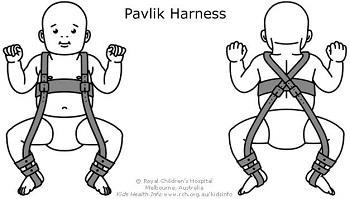
Juvenile arthritis should be suspected in a child who exhibits
Explanation
Juvenile arthritis should be suspected in a child who exhibits joint swelling and pain lasting
longer than 6 weeks. Juvenile arthritis refers to a group of chronic inflammatory conditions
that affect the joints in children and adolescents. Persistent joint swelling and pain are
common symptoms of juvenile arthritis and are often accompanied by other signs such as
morning stiffness, limited range of motion, and joint warmth.
, frequent fractures in (option A) is not correct because it, is not typically associated with
juvenile arthritis. Fractures are more commonly associated with conditions affecting bone
strength, such as osteoporosis or certain genetic disorders.
lurching and abnormal gait with limited abduction in (option A) is not correct because it,
may be seen in certain musculoskeletal conditions or hip joint abnormalities, but it is not
specific to juvenile arthritis.
increased joint mobility in (option D) is incorrect because it, is not typically associated with
juvenile arthritis. In fact, joint stiffness and limited range of motion are more characteristic of
this condition.
A nurse is teaching adolescent boys about pubertal changes. The first sign of pubertal change seen with boys is
Explanation
The first sign of pubertal change seen with boys is testicular enlargement. This is known as testicular or scrotal growth and is one of the earliest physical signs of puberty in boys. Testicular enlargement is followed by other changes such as the growth of pubic hair, penile growth, voice deepening, and facial hair growth.
voice deepening in (option A) is incorrect because it, typically occurs after testicular enlargement and is associated with the growth and development of the larynx during puberty.
scrotal enlargement in (option B) is incorrect because it, may occur simultaneously or shortly after testicular enlargement as part of overall genital growth during puberty.
, facial hair growth in (option C) is incorrect because it, is a later sign of pubertal development in boys and typically occurs after the initial testicular enlargement and growth of pubic hair.
The nurse is caring for a neonate with a suspected tracheoesophageal fistula (TEF). Nursing care should include which of the following?
Explanation
When caring for a neonate with a suspected tracheoesophageal fistula (TEF), nursing care should include elevating the head but giving nothing by mouth. Tracheoesophageal fistula is a condition where an abnormal connection exists between the trachea and oesophagus, leading to the passage of air and secretions between these structures. Feeding the infant orally can result in aspiration of feedings into the lungs, which can cause respiratory distress and complications. Therefore, it is important to keep the neonate in an upright position to reduce the risk of aspiration until a definitive diagnosis and treatment plan are established.
elevating the head for feedings in (option B), is not appropriate in this case as oral feedings should be avoided until the tracheoesophageal fistula is addressed.
avoiding suction unless the infant is cyanotic in (option C), is not correct. Suctioning may be necessary in neonates with suspected tracheoesophageal fistula to clear secretions and maintain a patent airway.
feeding glucose water only in (option D), is not an appropriate intervention for a neonate with a suspected tracheoesophageal fistula. In this situation, all oral feedings should be withheld until further evaluation and management.
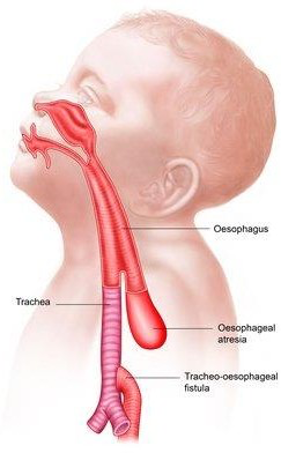
Which statement by the nurse is most appropriate to a 15-year-old whose friend has mentioned suicide?
Explanation
The most appropriate statement by the nurse to a 15-year-old whose friend has mentioned suicide is option A. The statement acknowledges the seriousness of the situation and emphasizes the importance of taking the friend's threat seriously. It also highlights the need for immediate help and intervention. Suicide threats should never be dismissed or taken lightly, and it is crucial to involve professionals who can provide appropriate support and assistance.
"Tell your friend to come to the clinic immediately," in option B is incorrect because places the responsibility solely on the 15-year-old to relay the message to their friend, which may not be the most effective or timely approach.
"If your friend mentions suicide again, get your friend some help," in (option C) is incorrect because it does not address the urgency of the situation. Waiting for the friend to mention suicide again before acting may lead to potential harm.
"You need to gather details about your friend's suicide plan," is incorrect because places the responsibility on the 15-year-old to gather information about the friend's suicidal intentions. While understanding the situation and obtaining relevant details is important, the immediate priority is ensuring the friend's safety and seeking professional help.
A student nurse asks the faculty why peer relationships become more important during adolescence. Which of the following is the nurse's best response?
Explanation
The nurse's best response to the student nurse regarding why peer relationships become more important during adolescence is option A. Peer relationships become significant during adolescence because they provide adolescents with a sense of belonging. During this developmental stage, adolescents are transitioning from a primary focus on their family to a greater emphasis on peer interactions and social connections. Peer relationships offer a sense of acceptance, support, and identity as adolescents strive to establish their own identities separate from their families.
adolescents dislike their parents in (option B), is not a correct or comprehensive explanation for the increased importance of peer relationships during adolescence. While it is common for parent-child conflicts to arise during this stage, it does not imply that adolescents dislike their parents as a general rule.
suggesting that adolescents no longer need parental control in (option C), is not correct. While adolescents are seeking increased independence and autonomy, they still require parental guidance and support. Parental control and involvement continue to be essential in providing a secure and nurturing environment during adolescence.
They promote a sense of individuality in adolescents in (option D), is incorrect. Peer relationships do contribute to the development of individuality by allowing adolescents to explore their own interests, values, and social roles. However, the primary reason for the increased importance of peer relationships during adolescence is the sense of belonging and social acceptance they provide.
Which term is used to describe an abnormally increased convex angulation in the curvature of the thoracic spine. looks like a "hump back?
Explanation
The term used to describe an abnormally increased convex angulation in the curvature of the thoracic spine, which appears as a "hump back" or rounded upper back, is kyphosis.
Kyphosis refers to an excessive forward rounding or curvature of the thoracic spine, leading to a visible hump-like appearance. It can result from various causes, including poor posture, congenital abnormalities, osteoporosis, or certain medical conditions.
ankylosis in (option A), refers to the abnormal fusion or immobility of a joint, typically due to inflammation or injury.
Lordosis, in (option C) refers to an excessive inward curvature of the lower back, causing the abdomen and buttocks to protrude.
, scoliosis in (option D), refers to an abnormal sideways curvature of the spine, typically in an "S" or "C" shape. It is different from kyphosis, which primarily affects the thoracic spine and results in a rounded upper back.
During painful episodes of juvenile arthritis, a plan of care should include what nursing intervention?
Explanation
During painful episodes of juvenile arthritis, a plan of care should include proper positioning of the affected joints to prevent musculoskeletal complications. Proper positioning helps to alleviate pain, reduce inflammation, and minimize stress on the affected joints. It also promotes joint stability and prevents contractures or deformities that can occur due to prolonged immobility.
a weight-control diet to decrease stress on the joints in (option A) is incorrect because it, may be a consideration in managing overall joint health and reducing excessive strain on the joints. However, it is not the primary nursing intervention during painful episodes of juvenile arthritis.
high-resistance exercises to maintain muscular tone in the affected joints in (option C) is incorrect because it, may not be appropriate during painful episodes of juvenile arthritis. High-resistance exercises can potentially exacerbate pain and inflammation. Exercise should be tailored to the individual's condition and guided by healthcare professionals.
complete bed rest to decrease stress to joints in (option D) is incorrect because it, is not recommended as a nursing intervention for painful episodes of juvenile arthritis. Prolonged bed rest can lead to muscle weakness, joint stiffness, and functional decline. Instead, maintaining mobility and appropriate activity levels within the child's pain tolerance and capabilities is generally preferred.
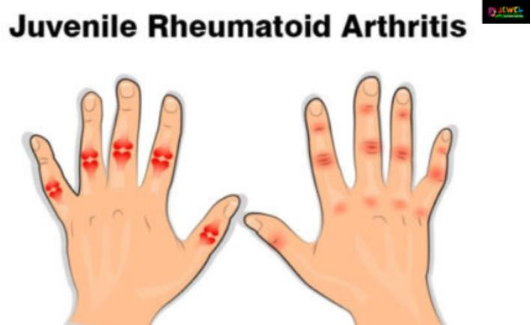
What should the nurse stress in a teaching plan for the mother of an 11-year-old boy with ulcerative colitis?
Explanation
In a teaching plan for the mother of an 11-year-old boy with ulcerative colitis, the nurse should stress the importance of coping with stress and avoiding triggers. Ulcerative colitis is a chronic inflammatory bowel disease that can be influenced by various factors, including stress and triggers. Helping the child and the family develop effective stress management strategies and identifying and avoiding triggers can help in reducing the frequency and severity of ulcerative colitis flare-ups.
preventing the spread of illness to others in (option B) is incorrect because it, is not the primary focus of teaching for ulcerative colitis. Ulcerative colitis is not an infectious condition that can be spread to others.
, nutritional guidance and supportive intake of sodas in (option C) is incorrect because it, is an important aspect of managing ulcerative colitis. However, it should be addressed in conjunction with a comprehensive nutritional plan that considers the individual needs and tolerances of the child. The mention of supportive intake of sodas may not be appropriate, as carbonated beverages can potentially aggravate symptoms in some individuals with ulcerative colitis.
teaching daily use of enemas in (option D) is incorrect because it, is not typically a part of routine care for ulcerative colitis in children. The use of enemas may be considered in specific situations or as part of an individualized treatment plan under the guidance of healthcare providers, but it is not a general teaching point for all children with ulcerative colitis.
What is a sign of increased intracranial pressure (ICP) in a 10-year-old child?
Explanation
A sign of increased intracranial pressure (ICP) in a 10-year-old child is a headache. Headache is a common symptom associated with increased pressure within the cranial cavity. It can be a result of various conditions that cause elevated intracranial pressure, such as brain tumours, intracranial haemorrhage, hydrocephalus, or brain trauma. The headache may be described as persistent, worsening, or accompanied by other symptoms such as nausea, vomiting, or changes in neurological status.
tachypnoea (rapid breathing), in (option A) is incorrect because it is not a specific sign of increased intracranial pressure. It can be seen in various conditions, including respiratory and cardiovascular disorders, anxiety, or physical exertion.
bulging fontanel in (option B) is incorrect because it, is more commonly observed in infants and is not typically seen in older children. The fontanelles (soft spots) on an infant's skull normally close by the age of 18-24 months.
an increase in head circumference in (option D) is incorrect because it, may be a sign of increased intracranial pressure in infants. However, in a 10-year-old child, the fontanelles are typically closed, and head circumference growth is not a reliable indicator of increased intracranial pressure
In caring for a child with an open fracture, the nurse should carefully assess for
Explanation
When caring for a child with an open fracture, the nurse should carefully assess for signs and symptoms of infection. An open fracture refers to a fracture where the bone is exposed through the skin, creating a direct pathway for microorganisms to enter and cause infection. Infection is a significant concern in open fractures and can lead to serious complications if not identified and treated promptly. Signs of infection may include increased pain, swelling, redness, warmth, purulent drainage, fever, or systemic signs of infection such as elevated white blood cell count.
Osteoarthritis in (option A) is incorrect because it, is not an immediate concern in the care of a child with an open fracture. Osteoarthritis refers to degenerative joint disease that typically develops over time and is not directly related to the acute management of an open fracture.
epiphyseal disruption in (option B) is incorrect because it, refers to an injury involving the growth plate (epiphyseal plate) that can affect bone growth and development. While it is a potential concern in fractures that involve the growth plate, it is not specific to open fractures and may not be an immediate priority in the initial assessment of an open fracture.
periosteum thickening in (option D) is incorrect because it, may occur in response to injury and fracture healing, but it is not specifically associated with open fractures and is not a primary focus in the initial assessment of an open fracture.
Sign Up or Login to view all the 46 Questions on this Exam
Join over 100,000+ nursing students using Nursingprepexams’s science-backend flashcards, practice tests and expert solutions to improve their grades and reach their goals.
Sign Up Now

